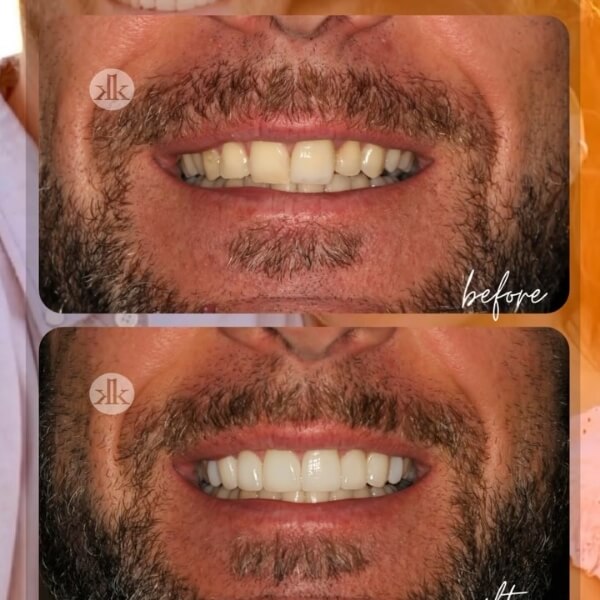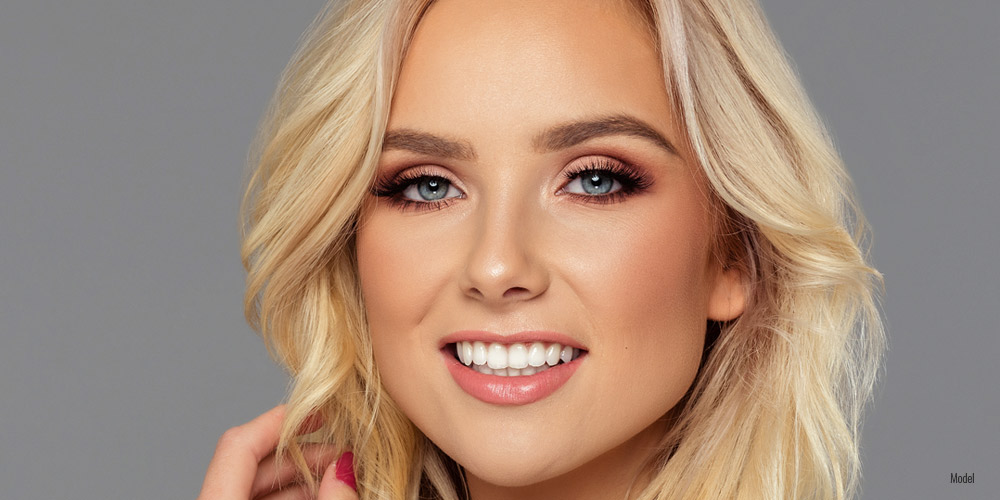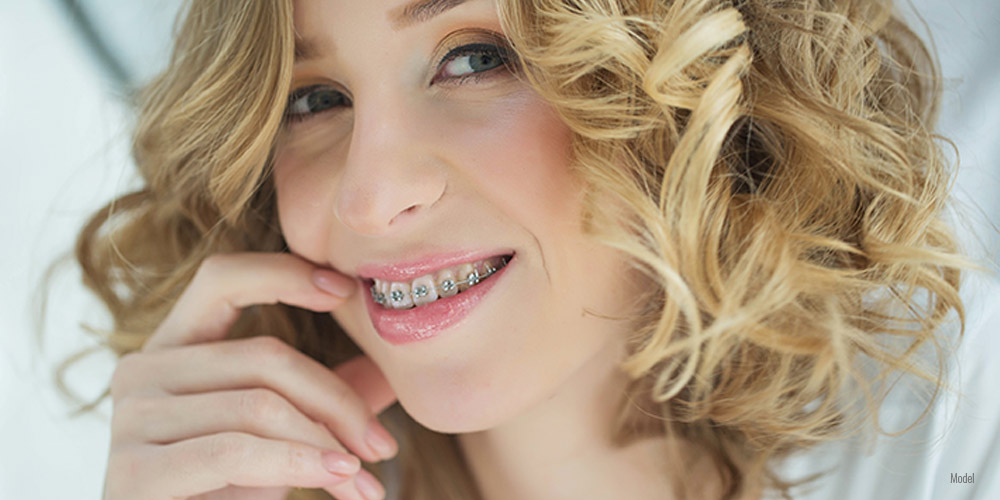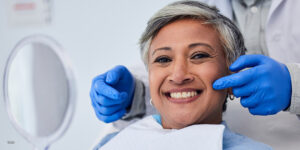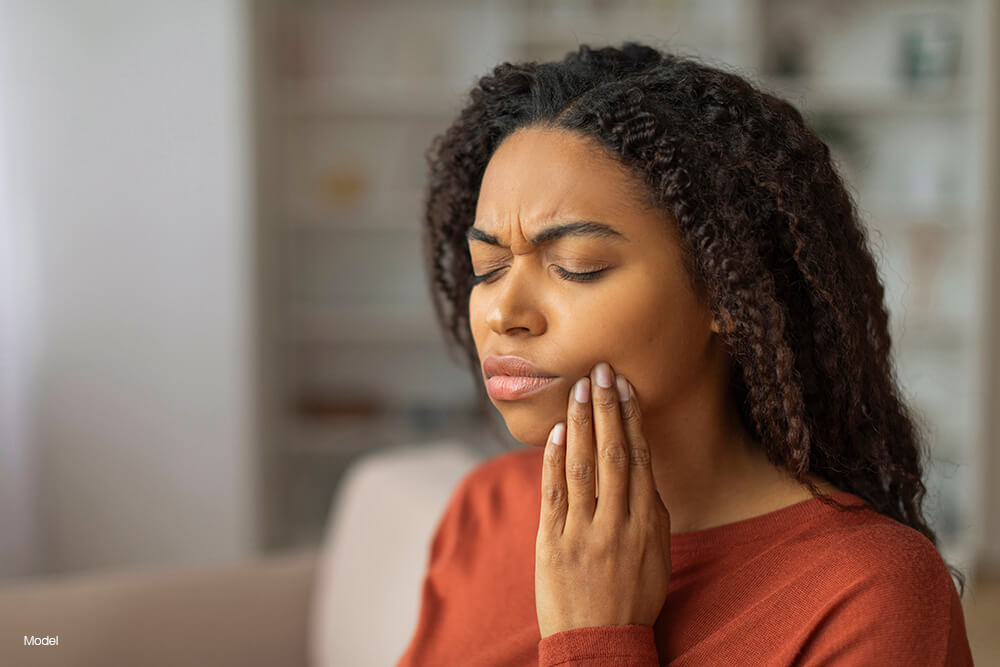
Treating Sleep Apnea in San Diego, CA
You’ve probably heard of sleep apnea or obstructive sleep apnea (OSA). However, it’s important to know that this condition often goes undiagnosed, leaving many people unaware that they have it. According to the National Sleep Foundation, over 18 million Americans suffer from sleep apnea but are unaware that their sleep is being disrupted. Often, it’s a partner or spouse who notices loud snoring, which leads to a visit to the doctor’s office. Disruptive snoring, along with other symptoms, can be a telltale sign of sleep apnea.
What Is Sleep Apnea?
Once diagnosed by your primary care physician or sleep specialist, Dr. Kohani can fit you for a mandibular advancement device (MAD) to address your symptoms. Treating sleep apnea can help you breathe easier, improve overall health, and enhance your quality of life, which is a top priority at La Jolla Cosmetic Dentistry & Orthodontics in San Diego.
Obstructive sleep apnea (OSA) is a disorder that interferes with restful sleep. It is characterized by frequent pauses in breathing while you sleep. These pauses can last from seconds to even minutes, followed by loud snorting or choking as breathing resumes. While you may not initially realize that sleep apnea is disrupting your sleep, it can significantly affect your alertness during the day. If left undiagnosed, it can take a serious toll on your health.
When you stop breathing and suddenly resume inhalation, your sleep patterns are disturbed, and you lose the benefits of deep sleep. This results in daytime fatigue and poor concentration. The condition is difficult to diagnose because it occurs while you’re sleeping. If you sleep alone but experience daytime symptoms like excessive sleepiness, poor reaction times, or blurred vision, you should consult with your doctor.
Sleep apnea is commonly overlooked since its symptoms overlap with many other conditions. However, if left untreated, sleep apnea can cause serious health problems due to the continuous lack of oxygen. Getting a proper diagnosis and treatment plan is crucial to prevent long-term effects.
Sleep apnea has been shown to lead to the following conditions:
- Hypertension
- Heart attack and stroke
- Depression
- Memory loss
- Irregular heartbeat
- Diabetes
- Weight gain
Sleep apnea can also severely impact your attentiveness, which can lead to more driver and work-related accidents, putting your life and the lives of others at risk. Although it is the leading cause of daytime fatigue, sleep apnea often remains undetected by medical professionals.
“At our practice, we do not cut corners. We only use the most advanced, cutting-edge equipment available.”rn— Dr. Kohani
How It Works
What Are the Steps to Sleep Apnea Treatment With an Oral Appliance?
Step One
Undergo an in-home sleep study to confirm that you have obstructive sleep apnea. La Jolla Cosmetic Dentistry & Orthodontics can refer you to a provider if needed.
Step Two
If the diagnosis is confirmed, schedule a visit to discuss your San Diego sleep apnea treatment options by calling (858) 295-0603 or using our contact form.
Step Three
A digital scan of your teeth and gums is taken and sent to our trusted lab for the fabrication of your mandibular advancement device.
Step Four
When your sleep apnea device is received, you will return to our office, and Dr. Kohani will check the fit, make any adjustments, and provide instructions.
Step Five
Wear the device as directed, and enjoy better, less-interrupted sleep and be more alert and focused during the day.
What Techniques Are Used to Treat Sleep Apnea?
Sleep apnea, a serious sleep disorder that affects millions worldwide, can be treated through a range of techniques. At Dr. Kohani’s office, we offer state-of-the-art treatments that are tailored to your unique needs. Below are the five most common and effective treatments for sleep apnea and modern solutions for better sleep.
1. Continuous Positive Airway Pressure (CPAP) Therapy
CPAP therapy remains one of the most widely used treatments for obstructive sleep apnea (OSA). This method uses a machine that delivers a constant stream of air through a mask, keeping the airway open during sleep. While CPAP is effective, it can be uncomfortable, and many patients struggle with mask fit and noise. CPAP therapy is best suited for moderate to severe cases of sleep apnea.
2. Mandibular Advancement Devices (MADs)
Mandibular advancement devices (MADs) are an increasingly popular and highly effective alternative to CPAP. MADs are custom-fitted oral appliances that reposition the lower jaw to keep the airway open. By gently pushing the jaw forward, MADs prevent the tongue and soft tissues of the throat from obstructing airflow. These devices are particularly useful for patients with mild to moderate obstructive sleep apnea and those who struggle with CPAP use.
MADs are a more comfortable, less intrusive, and practical solution for patients seeking an effective and quiet option. As an alternative to CPAP, these dental devices are increasingly favored for their ease of use and minimal disruption to sleep.
3. Oral Appliances for Sleep Apnea Treatment
Other oral appliances, such as tongue-retaining devices (TRDs), can also be used to treat sleep apnea. TRDs work by holding the tongue in a forward position to prevent it from blocking the airway during sleep. These devices are suitable for patients who may not require a mandibular advancement device but need a solution to address airway obstruction due to tongue positioning.
4. Surgical Interventions for Sleep Apnea
In more severe cases or when other treatments are ineffective, surgery may be recommended. Surgical options include:
- Nasal Septoplasty: A procedure that corrects structural issues in the nasal passages, improving airflow.
- Uvulopalatopharyngoplasty (UPPP): A surgery to remove excess tissue from the throat, helping widen the airway.
- Maxillomandibular Advancement (MMA): A surgical procedure that repositions the upper and lower jaw to improve the airway space.
Surgical treatments are typically considered when anatomical abnormalities are the primary cause of obstructive sleep apnea and non-invasive treatments have failed.
5. Lifestyle Modifications for Sleep Apnea Relief
In addition to medical treatments, lifestyle changes can play a key role in managing sleep apnea symptoms. These modifications include:
- Weight Loss: Reducing excess weight can decrease fatty tissue in the throat, reducing airway obstruction.
- Sleeping Position: Sleeping on your side rather than your back can alleviate snoring and prevent the airway from collapsing.
- Avoiding Alcohol and Sedatives: These substances relax the muscles in the throat, increasing the risk of airway collapse.
- Quitting Smoking: Smoking contributes to inflammation and fluid retention in the airways, worsening sleep apnea symptoms.
-
The Advantages of Mandibular Advancement Devices for Sleep Apnea
While CPAP therapy is often considered the gold standard for treating obstructive sleep apnea, many patients find it uncomfortable or difficult to use long-term. The mandibular advancement device (MAD) provides an alternative solution that is not only more comfortable but also highly effective in treating mild to moderate cases of sleep apnea.
The device resembles a custom-made mouthguard, designed to fit comfortably in your mouth while you sleep. It gently shifts your jaw forward and keeps the airway open, preventing interruptions in breathing. Unlike CPAP machines, MADs do not require masks, hoses, or a constant power source. These devices are discreet, portable, and easy to use, making them an excellent choice for patients seeking a simpler, more comfortable solution for sleep apnea management.
-
Why Choose Dr. Kohani’s Office for Sleep Apnea Treatment?
Dr. Kohani and his team specialize in providing personalized dental solutions for sleep apnea patients. With our advanced technology and expertise, we are able to offer effective alternatives to CPAP, such as the mandibular advancement device, ensuring that you can enjoy restful, uninterrupted sleep without the discomfort of traditional treatments.
If you suffer from sleep apnea, contact La Jolla Cosmetic Dentistry & Orthodontics at (858) 295-0603 to schedule a consultation for a simple nighttime appliance that will change the way you sleep.
-
Is There Downtime Associated With Treatment for Sleep Apnea?
Depending on the type of treatment needed to correct your TMD, there may be no recovery period involved at all.
- CPAP therapy typically does not require downtime, as it is used nightly during sleep.
- Oral appliances may cause some initial discomfort or an adjustment period, but there is generally no downtime associated with their use.
- If surgery is needed to treat sleep apnea, downtime will be involved, but this is rarely the case.
-
What Results Can I Expect After Sleep Apnea Treatment?
The results of sleep apnea treatment can vary depending on the type of treatment chosen, the severity of the condition, and individual factors. With effective treatment, many individuals experience significant improvements in symptoms such as snoring, daytime sleepiness, and overall sleep quality. Long-term adherence to treatment can help reduce the risk of hypertension, heart disease, and stroke. Additionally, treatment can improve energy levels, mood, and overall quality of life. Working closely with healthcare providers to monitor progress and make any necessary adjustments to optimize outcomes is important.
Testimonials
Our patients LOVE us, and you will too!
Dr. Kohani changed my smile by using his special veneering technique with minimal alteration of my own teeth. He is an absolute perfectionist and does unbelievable work. No one can tell I have veneers; they just notice my bright and shining smile.
I have gone to Dr. Kohani a few times now and have had nothing but great experiences. I was impressed with the friendly staff that is welcoming and organized. We all know these visits aren’t necessarily ones we look forward to, but Dr. Kohani makes this experience quite pleasant…
I was new to La Jolla, out looking for a dentist and I actually walked into Dr. Kohani’s office by mistake. Well, it was one of the best mistakes I made. My teeth needed a ton of work and Dr. Kohani did a beautiful job. I needed fillings, root canals and veneers. Dr. Kohani was able to do it all…
Sleep Apnea Treatment FAQ
What are some common signs that I may have sleep apnea?
If you are experiencing some of these symptoms, you may have obstructive sleep apnea, central sleep apnea, or a combination of both (complex sleep apnea).
- Loud snoring that wakes your partner
- Periodic pauses in breathing during sleep
- Fatigue and sleepiness when awake, even after a full night of sleep
- Frequently waking up gasping for air
- Difficulty remaining asleep
- Headaches when you wake
- Excessive dry mouth or sore throat in the morning
- Irritability
- Moodiness
- Difficulty concentrating
How is sleep apnea diagnosed?
Overnight sleep studies performed in a sleep lab or at home are used to diagnose sleep apnea. Special equipment monitors breathing, brain waves, leg and eye movements, heart rate, and other criteria while you sleep. A specially trained medical professional analyzes the results to determine if you have sleep apnea, what type, and how severe it is.
What is polysomnography?
Polysomnography is the medical term for a sleep study, usually performed in a sleep disorders clinic.
How do at-home sleep studies work?
Self-administered home sleep studies are becoming popular for diagnosing obstructive sleep apnea. A sleep clinic provides you with a finger clip, monitor, belt, nasal cannula, and instructions for their temporary use over two nights or more. The device monitors and measures airflow, blood oxygen saturation, and respiration.
What does AHI mean?
AHI stands for apnea-hypopnea index and measures the severity of a patient’s sleep apnea. It refers to the total number of breathing pauses (apneas) and shallow breathing periods (hypopneas) that a sleep apnea sufferer averages each hour during sleep. Each apnea and hypopnea must last 10 seconds or longer to be included. The total number of apnea events is then divided by the total hours of sleep during the measurement period.
What are the severity levels of sleep apnea?
OSA is rated based on an apnea-hypopnea index (AHI) or the average number of breathing interruptions and hypopnea episodes per hour. Your obstructive sleep apnea may be mild (5 to 15 AHI), moderate (15 to 30 AHI), or severe (greater than 30 AHI).
How can a mandibular advancement device (MAD) treat my obstructive sleep apnea?
With constructive sleep apnea, the relaxation of your throat, tongue muscles, and soft palate leads to a partial airflow blockage, which causes pauses in breathing. A MAD pulls your jaw and tongue slightly forward, creating more space to prevent obstruction and a less restricted airway. The forward positioning of your tongue also prevents it from falling to the back of your throat, so it doesn’t cause partial obstruction while you sleep. This process also tightens other significant muscles in your throat, further widening your air passageway.
If you have sleep apnea, Dr. Kohani can assist you with a mandibular advancement device. Many people do not know this device can correct their sleep apnea symptoms. If you have or suspect sleep apnea, be sure to ask Dr. Kohani about this device during your next check-up and dental cleaning appointment.
What are the advantages of a MAD over a CPAP machine?
When used regularly, CPAP machines can effectively treat sleep apnea. Unfortunately, most people have trouble with compliance. The machines are large and noisy, and the mask is hard to get used to. A MAD is small, portable, unobtrusive, and easy to use. Nightly use is much easier in terms of compliance.
Interested in Sleep Apnea Treatment in San Diego, CA?
If you are looking for a modern solution to your sleep apnea, call (858) 295-0603 to reach La Jolla Cosmetic Dentistry & Orthodontics and schedule a comprehensive consultation with Dr. Kohani. Dr. Kohani provides comprehensive dental care, including specialty services such as sleep apnea and TMJ disorder treatment, as well as sedation dentistry when needed.
Patient Portal Login


